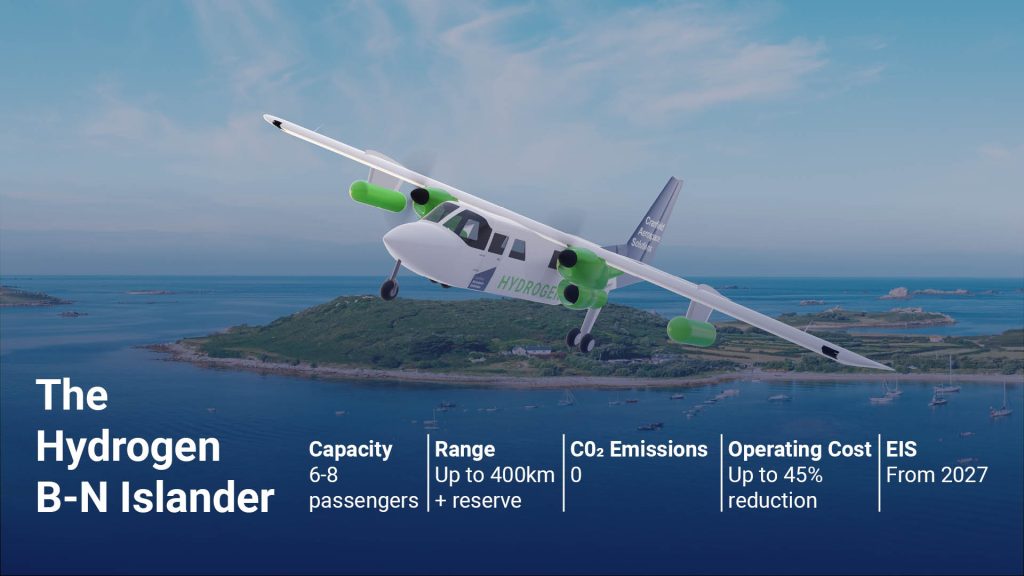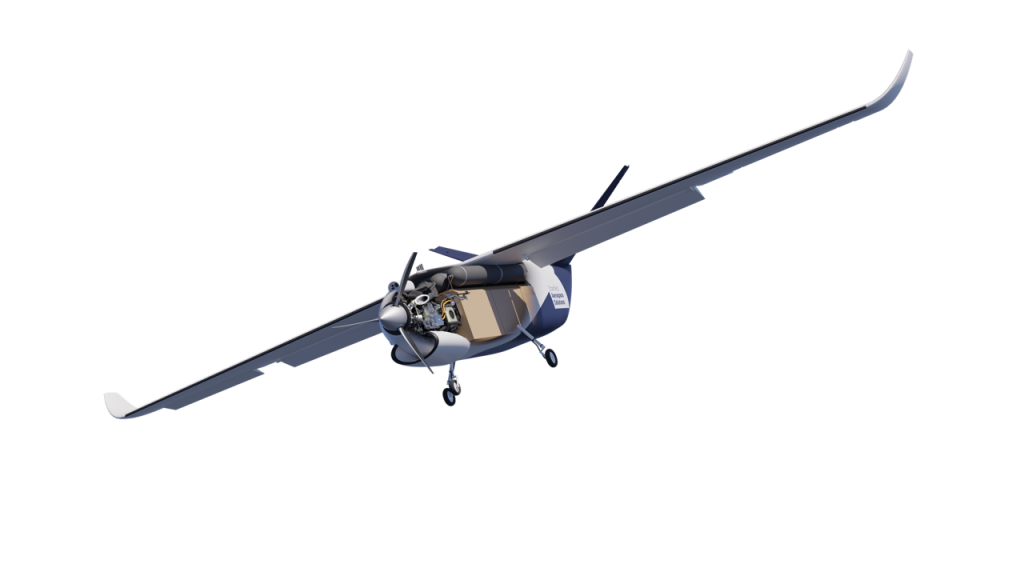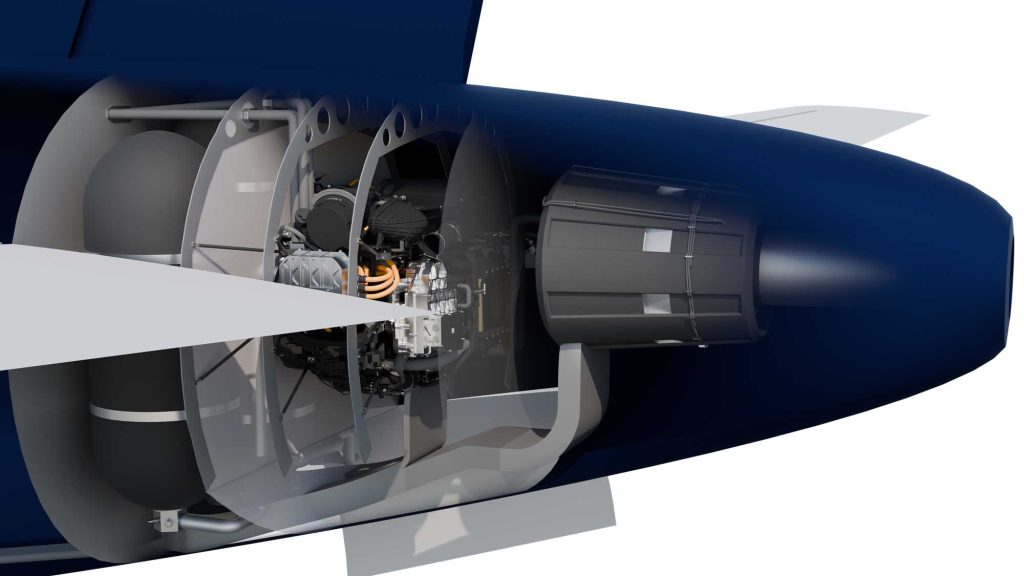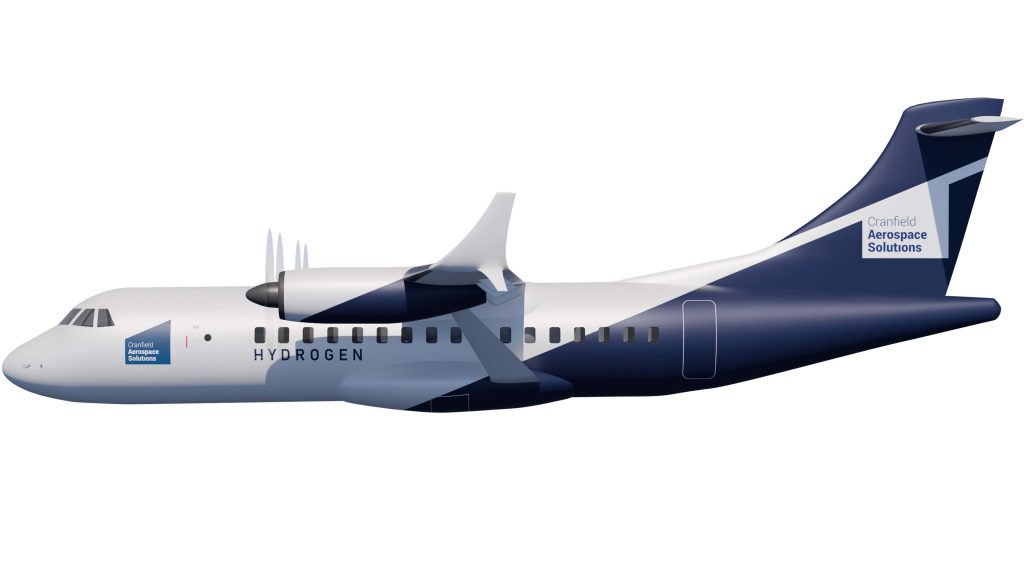We are developing a world-leading hydrogen fuel cell drivetrain technology that will be a safe, certifiable, and commercially viable solution for the aviation market. We have achieved a “miracle of packaging” that underscores the feasibility of hydrogen-electric propulsion systems for aircraft:
We can adapt our technology to multiple aircraft applications with our proven aircraft and systems integration capabilities – including passenger aircraft, cargo UAVs, eVTOLs and APU applications.

Hydrogen Fuel Tanks: 700 bar gaseous
Hydrogen Fuel Distribution System: pipework & devices to distribute hydrogen fuel from tank to fuel cell
Propellors: conventional, 3-blade, variable pitch, max RPM 2300
240kW hydrogen fuel cell system in each nacelle, including fuel cell stacks, balance of plant and control unit
Human Machine Interface: modified controls & displays in the cockpit
Thermal Management System: one per nacelle; advanced heat exchanger, providing integrated liquid cooling for HFCS, EPU & PDS
220kW electric propulsion units in each nacelle; motor + inverter-controllers
PDS (Power Distribution System)

220kW electric propulsion units in each nacelle; motor + inverter-controllers
PDS (Power Distribution System)
Thermal Management System: one per nacelle; advanced heat exchanger, providing integrated liquid cooling for HFCS, EPU & PDS
Human Machine Interface: modified controls & displays in the cockpit
Propellors: conventional, 3-blade, variable pitch, max RPM 2300
250kW hydrogen fuel cell system in each nacelle, including fuel cell stacks, balance of plant and control unit
Hydrogen Fuel Tanks: 350 bar gaseous
Hydrogen Fuel Distribution System: pipework & devices to distribute hydrogen fuel from tank to fuel cell
Application on existing aircraft that are simple to modify and commercially viable for short flights.

The conversion of a Britten-Norman Islander 9-seat aircraft from conventional fossil fuel to that of gaseous hydrogen propulsion. This development is set to deliver the world’s first fully certified, truly green, passenger-carrying aircraft using hydrogen fuel cell technology.
Over 100 Letters of Intent from operators who intend to bring the hydrogen Islander into their operations: Skybus, Evia Aero, Air New Zealand, Stratus 9, Torres Strait Air.
Supplemental Type Certificate for the modification to be certified by 2026 with entry into passenger service from 2027.
Drives regulation required to certify hydrogen technology on aircraft, in airports and in maintenance organisations, kickstarting the Zero Emissions Age of aviation.
Project Fresson is partly grant-funded by the Aerospace Technology Institute

The CAeS hydrogen powertrain can be adapted to suit the requirements of other development platforms – cargo UAVs, seaplanes and amphibious aircraft, eVTOLs, etc. Combining our aircraft integration capabilities and regulatory approvals, we can work with platform developers and OEMs to find the right configuration to suit their needs.

125kW – 500kW Cargo Drones
Zero emissions & Low noise
APUs contribute 20% of all aircraft ground emissions & 10% of all airport emissions.

The CAeS hydrogen fuel cell system technology can be adapted into a hydrogen-powered retrofittable APU.
The large hydrogen-powered aircraft of the future will all need a hydrogen-powered APU. The development of a retrofittable solution now represents a powerful step in maturing this technology

Retrofitting aircraft with hydrogen propulsion technology is a perfect first step, the right market entry approach and a critical enabler for the aviation industry. But retrofit will only get you so far.
To fully realise the potential of the technology, the propulsion system & the aircraft need to be working in symbiosis – to be designed around each other.
Hydrogen propulsion technology has such a significant impact on airframe design, especially when moving to liquid storage, this will need to be drastically reconsidered airframe design.
Building on the learnings from our hydrogen fuel cell drive train developments and the decades of experience CAeS has in whole aircraft concept design, CAeS are committed to developing clean sheet, zero emissions aircraft for the future, serving the sub-regional and regional markets.